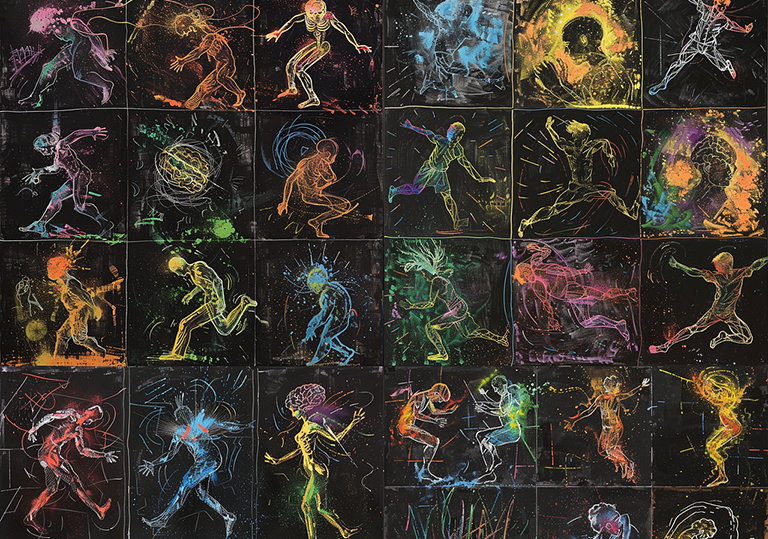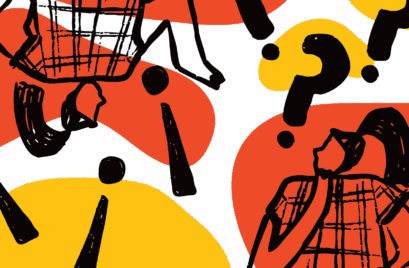
By NOT taking the emotion out of it
To remain relevant, competitive, and buoyant, organisations need to change the frequency of their actions into increasingly shorter cycles. This perpetual change demands new processes, systems and behaviours that can be challenging for workers. They may experience a sense of threat — anger, resentment, or despondency as they transition through change. Of the many conversations that occur during these periods, leaders often ask — How can I take the emotion out of it?
The short answer is — we can’t. Emotions are part of the human condition. We can no sooner ‘take them out’ as we can remove the blood from our bodies. What we can do is increase our level of awareness of how our minds and bodies respond to rewards and dangers and develop our capacity to make effective decisions in the moment.
What is Somatic Intelligence?
Think about a time when you’ve been challenged or received some difficult feedback at work — it’s not likely to be a comfortable memory. Perhaps you can remember a churning stomach, a hot flush, tense muscles, or shakiness from pumping adrenalin. Conversely, there may be times when you’ve been required to give difficult direction or feedback, which gave you similar feelings.
This state of heightened emotion is our body warning us there’s danger. In terms of evolutionary survival, it makes sense — up against a crocodile or snake, quick defensive action is crucial — but sitting in a work meeting, it can be more of a hindrance than a help. Running away or going on the attack with our colleagues is generally not productive. The good news is we can use our somatic intelligence to tune in to the physical cues our body is offering and gain deeper insight into the situation.
Somatic Intelligence is an awareness of how your body responds to stimulus and the ability to use that awareness to cope with challenges. An individual who develops their somatic intelligence increases their ability to recognise and tolerate strong emotions and make conscious choices about how they will respond to and manage those emotions.
How do we build our somatic intelligence?
1. Tune in to the physical cues
The first step to increasing somatic intelligence is to learn to tune in to our body’s physiological reactions to threat. This is more difficult than just thinking or talking about it. The foundations of somatic responses begin when we are very young and form habitual patterns that lie beneath our consciousness. Recent research has established that stressful and traumatic events can even change the epigenetic signatures in our DNA, meaning that body and emotion are deeply integrated and deserving of our attention.
When we feel the physical cues, we need to STOP! Pay attention to the sensations and understand that this is a significant moment, where a choice can be made that will impact our relationships. It’s a skill that comes with practice and may initially happen only in retrospect.
2. Understand our habitual responses
The second step is to begin to open these habitual responses up to examination, so they can be understood and managed. Our responses whether they be defense, attack, or submission, are established when we are young and may have served us in the past to protect ourselves or our loved ones or to avoid violence or aggression. The question now is: have they outlived their usefulness?
Ask yourself: why am I feeling this way? What is going on for me? Why am I reacting this way when others may not? Where is the root of this feeling?
3. Let go of emotions that are no longer serving you
Early emotional learning changes the physical structures of our brain, becoming hard-wired neural pathways that are highly resistant to change. This means that retraining ourselves is about creating new neural pathways, and that means engaging the body as well as the brain during the process of new learning. New pathways are developed through doing.
Actively manipulating our bodily sensations involves mindfulness, breath exercises, muscle relaxation, and movement exercises such as yoga and dance. These body-based practices allow us to learn how to calm the mind and body, while giving us a sense of safety and control. On a physiological level, deep breathing and movement reduce cortisone and adrenaline in the system, allowing our ‘fight or flight’ response to subside.
4. Practice your somatic skills
The final step is to put these new somatic skills into practice, so they become actions and habits, not just good ideas. It is important that they’re practiced in situations that have meaning to us. Imagine holding a picture of a spider versus holding the spider itself — it’s likely that your body will have quite different responses. This step therefore is about systematically and repetitively putting ourselves into challenging situations (real or role-played) and consciously engaging our somatic skills to effectively manage our stress responses to remain positive and productive. It is important that we continue to feel safe, so engaging outside support is also an important feature.
Leading with Somatic Intelligence
When leaders develop their somatic intelligence, they can more clearly identify when others are in threat and reacting in ways that may not be effective. In these moments, leaders can acknowledge the emotions and build psychological safety, calming their team member, so that emotions don’t hijack the task at hand. Rather than ‘taking the emotion out of it’, we consciously raise our emotional awareness.
The “centeredness” achieved through somatic intelligence enhances our ability to manage stress, maintain strategic focus, and improve interpersonal relationships. We’re then better able to tolerate and transform stressful thoughts, rather than simply reacting or becoming overwhelmed. Ultimately, problems and challenges can be reframed as opportunities for growth.
References
Blake, Amanda. (2009). Developing Somatic Intelligence: Leadership and the Neurobiology of Embodied Learning. embright. https://embright.org/wp-content/uploads/2013/03/Developing-Somatic-Intelligence-NLJ10x.pdfhttps://doi.apa.org/doiLanding?doi=10.1037%2Ftra0000574
Mandolesi, Laura, Arianna Polverino, Simone Montuori, Francesca Foti, Giampaolo Ferraioli, Pierpaolo Sorrentino, and Giuseppe Sorrentino. (2018). Effects of physical exercise on cognitive functioning and wellbeing: Biological and psychological benefits. PubMed Central (PMC). https://www.ncbi.nlm.nih.gov/pmc/articles/PMC5934999/
Miller, O., Shakespeare-Finch, J., Bruenig, D., & Mehta, D. (n.d.). DNA methylation of NR3C1 and FKBP5 is associated with posttraumatic stress disorder, posttraumatic growth, and resilience. APA PsycNet. https://doi.apa.org/doiLanding?doi=10.1037%2Ftra0000574
Noontil, A. (1994). The body is the barometer of the soul so be your own doctor II: We are an endangered species: Source your power, be committed, beingness illuminates determination, life is a never-ending experience.
Schwartz, Tony and Pines, Emily. (2020, March 23). Coping with fatigue, fear, and panic during a crisis. Harvard Business Review. https://hbr.org/2020/03/coping-with-fatigue-fear-and-panic-during-a-crisis?utm_medium=email&utm_source=newsletter_daily&utm_campaign=dailyalert_not_activesubs&referral=00563&deliveryName=DM73690
What is somatic intelligence? (2019, February 20). Healthy UNH. https://www.unh.edu/healthyunh/blog/psychological-health/2019/02/what-somatic-intelligence







